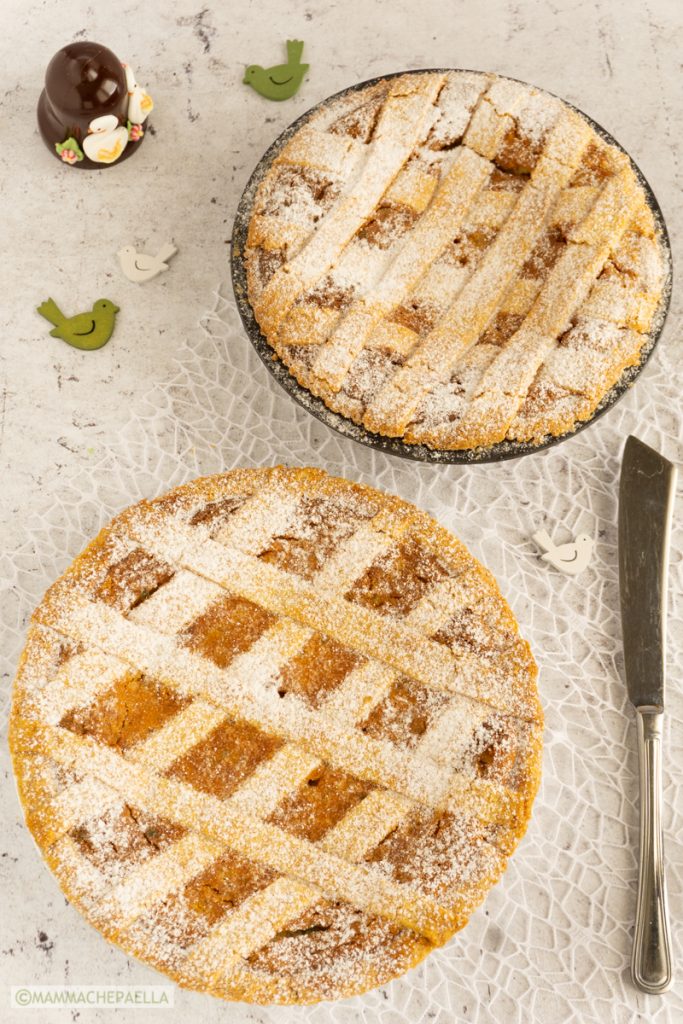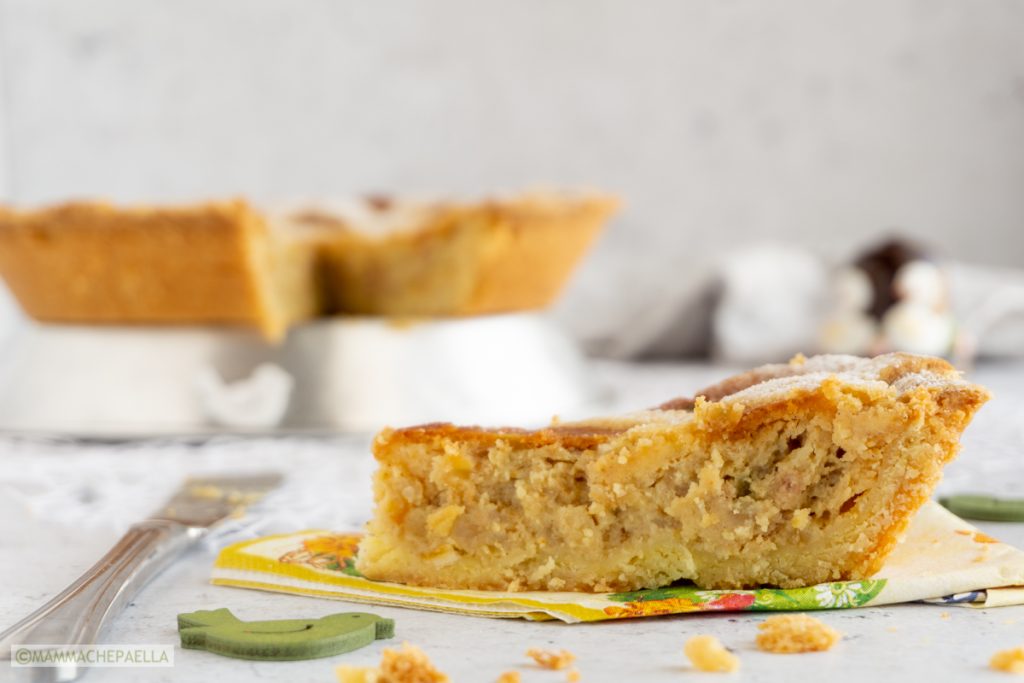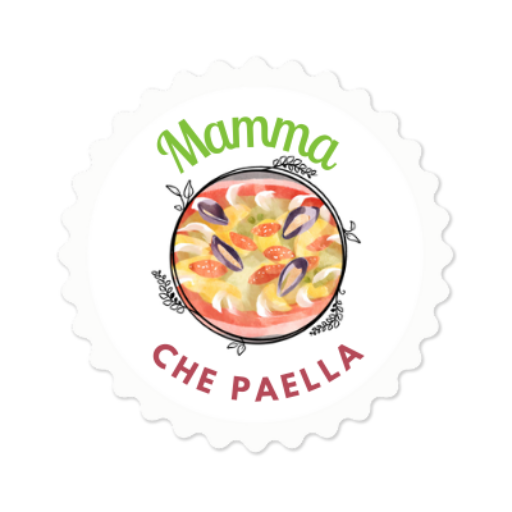This Neapolitan pastiera recipe is an original Campania recipe as it was kindly given to me by the mother of a school friend of my daughter, a Neapolitan who moved to Sicily for her husband’s work. The recipe belongs to her friend, who, if I understood correctly, was a professional pastry chef. So it’s more than a valid recipe, indeed a very valid one!! I just made a few tweaks from tips I found here and there from other Neapolitan recipes, but in essence, the recipe is exactly what was given to me.
During the first test run, during Easter 2022, unfortunately, unaware that leaving out some ingredients like candied fruits resulted in nothing more than a facsimile (more fac than simile, nonetheless), but in any case, the cake-tart-similar-pastiera flew away and was very much enjoyed by everyone who tasted it!
The second time, made in the summer, I didn’t get fooled and followed the recipe to the letter and what a difference it was!!! The pastiera came out perfect, with all the aromas tradition demands, thus becoming the dessert that will now accompany my Easter preparations and beyond. Because, to be honest, it’s so beautiful and good that I don’t see why not make it on every special occasion!
Among the specifics you will read below, I set the difficulty level as ‘medium’ but only because the preparation requires several steps, hours of waiting, and, most importantly, it must be cooked in advance! Yes, because the earlier it is prepared (the pastiera must be cooked at least 2 days before its intended consumption) the more the flavors and aromas merge into the dessert itself. And don’t worry that the pastiera will spoil! The sugars it contains act as a preservative and the long cooking time pasteurizes the ricotta, allowing it to be stored in the fridge for up to 10 days.
The recipe I propose is perfect for preparing 2 pastieras, one 9 inches and the other 9.5 inches. This way you can offer it to many relatives, friends, colleagues… who will surely appreciate it.
Shall we prepare it together?
- Difficulty: Medium
- Cost: Medium
- Rest time: 2 Days
- Preparation time: 3 Days
- Portions: 20
- Cooking methods: Oven, Slow Cook
- Cuisine: Italian
- Seasonality: Autumn, Winter, and Spring
Ingredients
Neapolitan Pastiera, Original Campania Recipe
- 3 1/3 cups all-purpose flour
- 1 egg (size M)
- 2 1/2 tbsp egg yolk (approximately 2 medium yolks)
- 1 cup sugar
- 6 1/3 oz lard
- 1 tbsp almond flavoring (necessarily bitter almond)
- 1 pinch salt
- 1 orange (grated peel of untreated orange)
- 1 lb sheep ricotta (can be replaced with cow ricotta)
- 3 1/8 cups sugar
- 4 eggs (size M)
- 2 1/2 tbsp egg yolk (approximately 2 medium yolks)
- 1 packet vanillin
- 1 tbsp orange blossom water
- 2 tbsp ground cinnamon
- 17 2/3 oz cooked wheat
- 1 1/4 oz lard
- 1 1/4 cups milk (semi-skimmed is also fine)
- 1 lemon (grated peel of untreated lemon)
- 2 oz candied citron
- 2 oz candied orange
- 2 oz candied pumpkin
- as needed egg white (to brush the pastry before filling)
- as needed lard (to grease the pans)
Tools
- 1 9-inch Pan
- 1 9.5-inch Pan
- 1 Rolling Pin
- 1 Blender
- 1 Cutter
Steps
Drain both the ricotta and cooked wheat well, inside the refrigerator. This step is crucial for perfect cooking of the Neapolitan pastiera.
Pour the cooked wheat and milk into a saucepan and let it soak for about 2 hours;
Add the lard and the grated lemon peel. Then cook over medium heat for 10 minutes, stirring often, until it becomes creamy. If preferred, you can blend the cream so the wheat becomes unnoticeable;
Separately, blend the ricotta with the sugar, whole eggs, yolks, vanillin, orange blossom water, and ground cinnamon. Work it all until the mixture is very smooth;
Store the creams separately in the refrigerator until the next day, covering them with plastic wrap;
Now let’s prepare the pastry, so pour the flour into the planetary mixer bowl like a fountain, add all the ingredients to the center, and knead with the hook until the dough is well mixed. Cover with plastic wrap and keep in the refrigerator until the next day;
Add the candied fruits chopped into small cubes or finely chopped with a knife to make them almost unnoticeable, to the ricotta cream;
Combine the two creams, that is, the ricotta cream with the wheat cream, and mix well until it becomes a homogeneous mixture;
Preheat the oven to 356°F;
Take the shortcrust pastry out of the refrigerator and roll it out with a rolling pin to a thickness of about 1/5 inch;
Grease the 2 pans with lard, one of 9 inches x 1.5 inches in height and the other of 9.5 inches x 1.5 inches in height, and then line them with the pastry;
Cut off the excess pastry, which will be rolled out again to make 7 strips, cut with a straight cutter (not serrated);
Prick the pastry with a fork and brush it with beaten egg white (this will help maintain the moisture of the filling even after cooking);
Pour the ricotta and wheat mixture into the pan, level it, and form the classic lattice with the previously made strips, arranging them to form diamonds;
Bake at 356°F (static oven) for about 90-95 minutes and, in any case, until the Neapolitan pastiera has taken on a golden color and, when tested with a toothpick, it is cooked (the toothpick must come out dry);
Once baking is finished, turn off the oven and, leaving the door slightly open, keep the Neapolitan pastiera inside until it has cooled down;
Then, keep it at room temperature the first day and, without removing the Neapolitan pastiera from the mold, store it in the refrigerator for at least 2 – 3 days. This wait is important to let all the aromas blend well;
Remove from the mold only before serving, dusting the Neapolitan pastiera with powdered sugar.
Enjoy your dessert!

Here’s how it looks when cut: perfectly moist!


